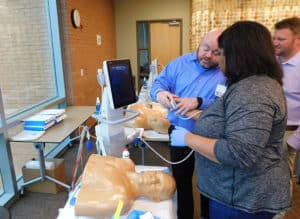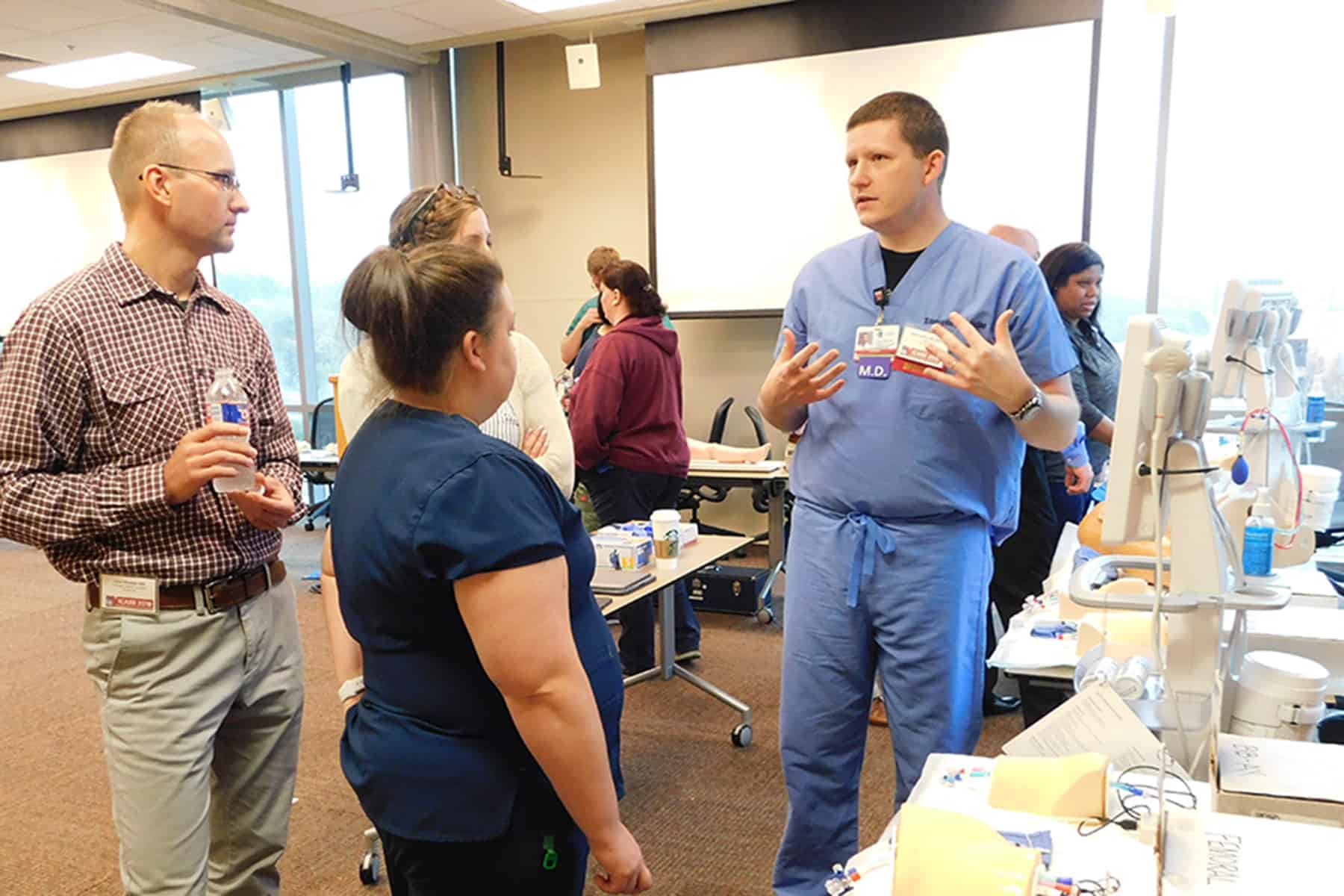UAMS Hosts Fourth ICARE Conference for Trauma Education
| More than 180 health care professionals, first responders, police officers and firefighters gathered at UAMS in Little Rock on April 6-7 to receive updates and additional training exercises on best practices in emergency care.
It was the fourth year for the annual interactive ICARE Conference (Improving Critical and Acute Care through Regional Education).
“ICARE is the only educational conference providing an opportunity to explore advanced concepts in emergency medicine within the state,” said conference director Rawle “Tony” Seupaul, M.D., professor and chair of the UAMS Department of Emergency Medicine.
Its unique curriculum and delivery allow participants to interact with the experts and practice advanced procedures in UAMS simulation lab stations. Participants assessed and treated traumatic injuries and were taught the best methods for common emergency situations.
Seupaul said emphasis on emergency care is important, especially since the quality and delivery of emergency care in Arkansas was given a grade of D by the American College of Emergency Physicians in their most recent five-year report card.
“We believe providing high-quality education is an important component in crossing the gap to meaningful improvement, he said. We have incorporated adult learning concepts by eliminating traditional teaching methods and incorporating more interactive and hands-on activities.”

“We have incorporated adult learning concepts by eliminating traditional teaching methods and incorporating more interactive and hands-on activities,” said Rawle “Tony” Seupaul, M.D., professor and chair of the UAMS Department of Emergency Medicine.
The conference, which included more than 30 speakers and faculty members, is led by the UAMS College of Medicine’s Department of Emergency Medicine and the UAMS Office of Continuing Education.
“We had a broad representation of participants from across the state including paramedics, nurses, pharmacists, medical students, residents and physicians,” said Seupaul.
Kirk Lane, state drug director, spoke on the opioid crisis in Arkansas, followed by an hour-long rapid-fire session on the challenges and methods for combatting it.
Other session topics ranged from traumatic injuries and improvements in critical care to treatment of psychiatric and pediatric emergencies, sepsis and stroke.
The conference included a poster exhibit, sessions on toxicological syndromes, end-of-life discussions and active shooter situations.
For the first time, during the pre-conference activity, organizers offered an advanced procedure lab with lightly embalmed cadavers.
